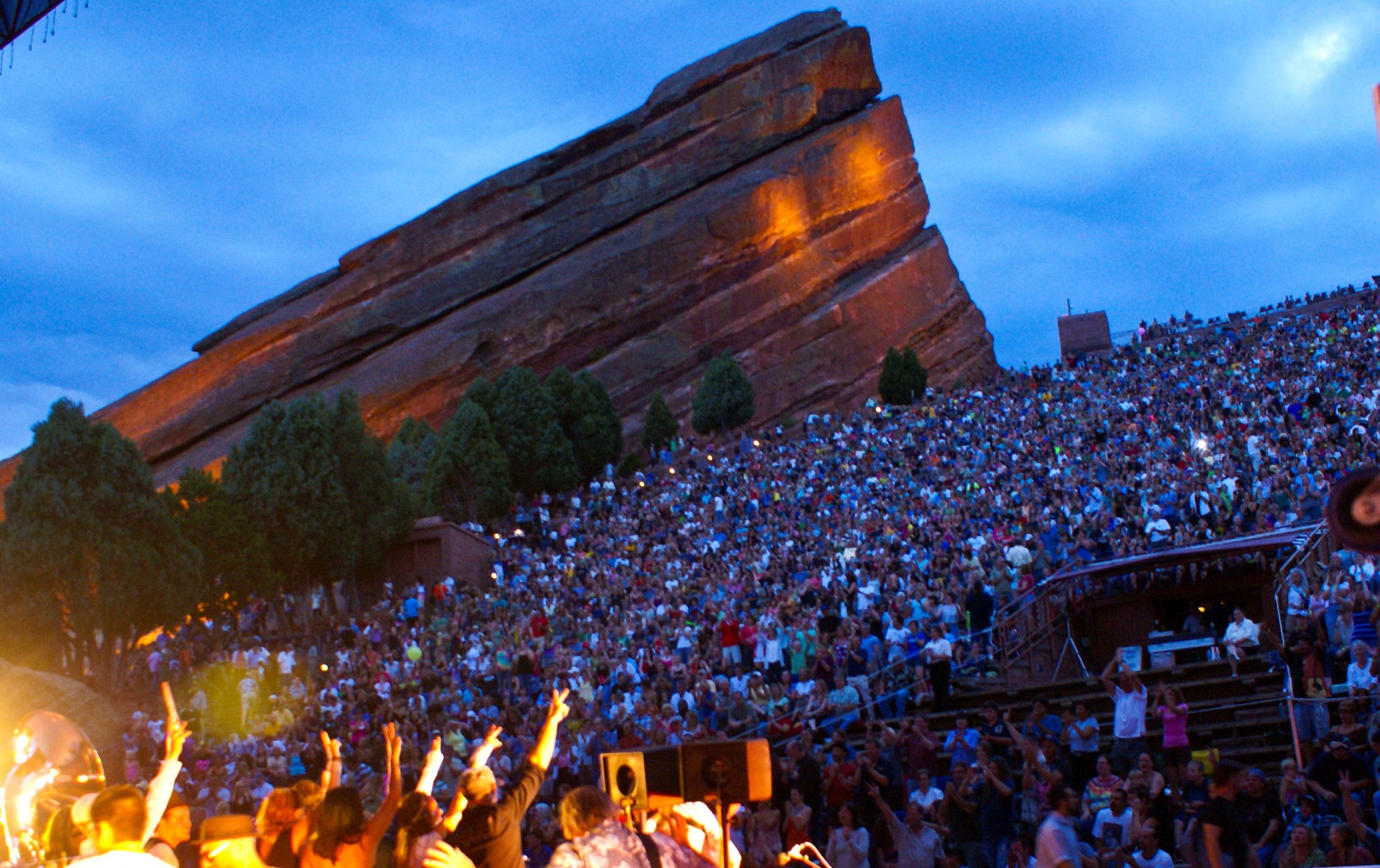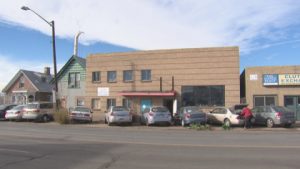DENVER (CBS4)– The forced evacuations of two DIY art spaces in Denver’s RiNo neighborhood late last year, Rhinoceropolis and Glob, have amplified tensions between artists seeking freedom and the city whose job it is to ensure their safety.
In an effort to ease such tensions and facilitate discussions between stakeholders, a panel of city planners, members of the Denver Fire Department, Denver Arts and Venues, and the Denver Commission on Cultural Affairs hosted a forum on Wednesday to talk about creative safe spaces.
Some 300 people attended the meeting, which was held at the McNichols Civic Center Building at 144 W. Colfax Avenue, including artists who currently occupy DIY spaces and members of Amplify Arts Denver, a group recently formed to represent them.
Planners said they had two goals in calling the meeting– to share safety compliance information with tenants and property owners and to share the information on what the city is doing now and plans to do going forward to address both concerns held by arts communities and inspectors tasked with upholding safety.
Rhinoceropolis and Glob, at 35th and Brighton in Denver’s RiNo neighborhood, are two of an unknown number of DIY art spaces that have existed in Denver for years, providing affordable places for artists to both live and work. Since the Ghost Ship tragedy in Oakland, in which dozens of people were killed when a fire broke out during a party at the DIY space, artists have feared they are being targeted by people who want them in the community.
The Denver Fire Department has said it acted on a tip initially received by police when it inspected Rhinoceropolis and Glob in early December. Eleven people were forced from their homes there. Since then, it has also inspected two other similar spaces, Juice Church and the Seventh Circle Music Collective, though no evacuations were ordered.
At the beginning of the meeting, Bobbie LeFebre, a writer and performer who joined the panel as a representative of the Denver Commission on Cultural Affairs, said the city is facing an “affordability crisis” that affects everything that would be discussed that night.
“It leaves us wondering if we’re intentionally being left out of the blue print,” LeFebre said, as Denver changes and development increases.
Laura Conway, an artist, who spoke on behalf of Amplify Arts Denver, told city leaders and fire officials artists were willing to work with them, if the officials showed a willingness to work with artists. She described artists living in the mostly “underground” DIY spaces as comfortable being “invisible” until the closures of Rhinoceropolis and Glob forced many to fear whether they’ll be evicted and to address inequities it sees in how they’ve been treated. Conway told fire inspectors she is skeptical of their actions, and asked them for a response that agrees Amplify Arts Denver’s positions.
“Safety exists on a spectrum,” Conway said. “There are code violations that are not life threatening.”
She added that she lost friends in the Ghost Ship tragedy and that she herself does not want to die in a fire, and does not want to see her friends suffer that fate.
Denver fire technician Mark Rudolph, who led the inspections of Rhinoceropolis and Glob and made the call to order evacuations on Dec. 8, 2016, introduced himself by recounting what he calls “personal failures,” in some cases, instances in which a missed item in a fire inspection had serious, if not fatal, outcomes.
Fire inspectors shut down the spaces after finding no working smoke detectors or sprinkler systems and other violations, including extension cords being used for permanent electrical wiring.
“Evacuations are not a first option or a second, they are the last option,” Rudolph said. “At the end of the night I have to go home knowing you all are safe wherever you’re at, that’s a responsibility I take seriously, and I’m going to keep doing that.”
Rudolph explained the three criteria by which he determines whether to evacuate residents from a building– whether people can get out of the building, how sufficient the structure is, and how significant the fire load is. He said the answers to such questions varies from building to building.
Fire officials have repeatedly said they are not targeting artists in their inspections, but admit they were aware people were living at Rhinoceropolis (and should not have been) as little as four months before taking action. They told the crowd a “technical” failure kept that information from populating in the department’s computer system and signaling the need for further action.
One artist questioned what prompted the Dec. 8, 2016 inspection, asking to know the source, but not necessarily by name, of the tip that kicked off the department’s action. Rudolph said he did not know specifically where it came from because it was referred to firefighters by police.
In response, the artist asked: “How are we supposed to believe that it’s not a witch hunt or a targeted situation?”
Jill Jennings Golich, Deputy Director of Denver Community Planning and Development suggested artists consult with their landlords to make sure they are meeting city codes and consult architects or contractors if upgrades are needed.
Since the RiNo evacuations, she said her department realized it needs “to do some work” on codes and “demystifying” its processes. Jennings Golich says the office is working on a guide that would make clear the zoning requirements on setting up a DIY space. In most of RiNo, where many of the city’s DIY spaces are located, up to four unrelated people are allowed to work and live in the same space together.
After the presentations, some artists reiterated a sentiment that the city is capitalizing on their creativity, while leaving them behind.
“We built this town, there wouldn’t be a Denver Art Museum without us, there wouldn’t be a Denver MCA without us, every cultural institution in this town came from us,” one artist told the panel, to applause, “and just once just once I want to see the city of Denver step up and (expletive) need us and want us and fight to keep us here.”
Another man expressed frustration over the high cost of renting performance venues, and said the problem extended beyond the artistic community to people of many races and ethnic backgrounds who feel victimized by the gentrification of Denver’s neighborhoods.
“Art is about freedom, and it’s not free now,” he said.
The crowd booed at the mention of Denver Mayor Michael Hancock and some balked at an offer put forth by the Denver Fire Department, that it would provide free inspections to the first 30 tenants or landlords to come forward in the next 30 days. People said they could not afford the solutions and suggestions members of the panel had proposed. Artists said landlords are unwilling to pay for the upgrades that would bring their buildings up to code.
“We want to have people be safe but we can’t afford it and you guys keep turning your backs on us,” one man shouted from the side of the room.
Afterwards, the fire officials handed out free smoke detectors and carbon monoxide detectors. Denver Arts and Venues announced a pledge to put $20,000 toward finding solutions to the problems. Those measures, too, were met with skepticism.
By Lauren DiSpirito
Lauren DiSpirito reports for CBS4 News at 10 p.m. She covers breaking news and feature stories along Colorado’s Front Range. Follow her on Twitter @CBS4Lauren.


